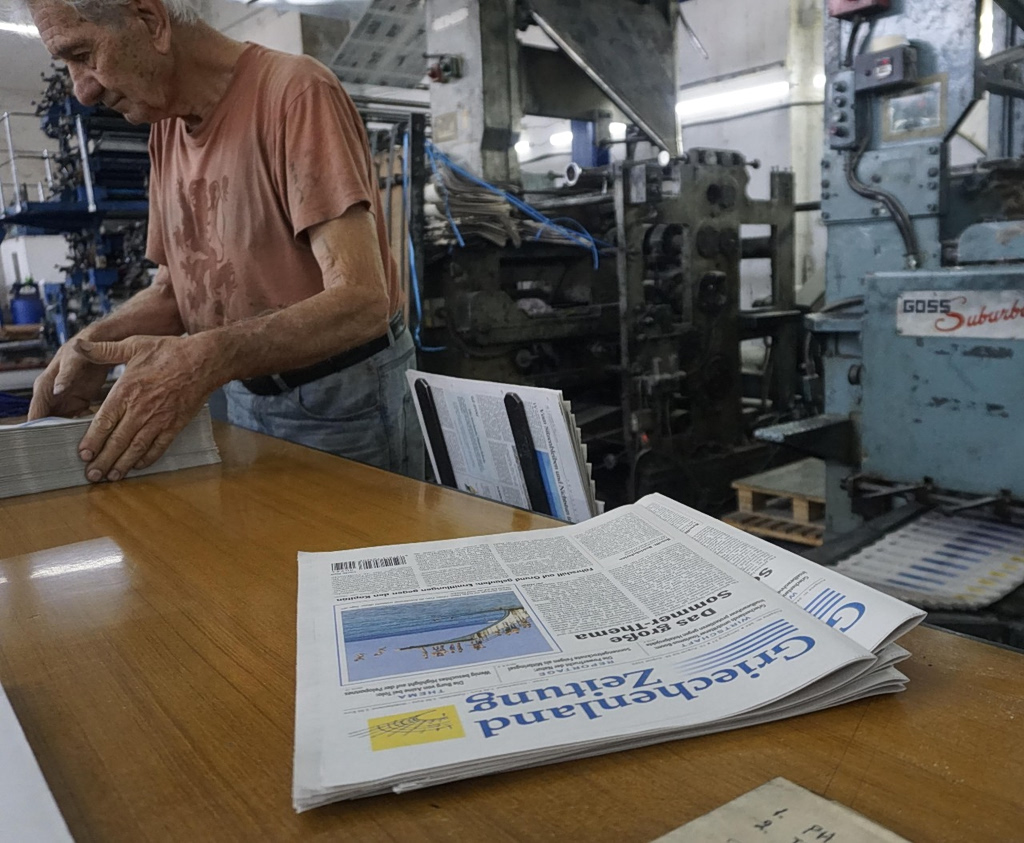A wave of deadly explosions of pagers and other electronic devices carried by militants in Lebanon has sharply heightened Pentagon concern about a potential ground war erupting in southern Lebanon between Israel and Hezbollah.
Even before the hundreds of widely dispersed detonations Tuesday and Wednesday, U.S. Defense Secretary Lloyd Austin told other senior Pentagon officials in a Monday meeting that he feared Israel could soon launch an offensive, after months of back-and-forth rocket and air attacks with Hezbollah, an Iranian-backed militia group that controls much of southern Lebanon.
U.S. alarm about a possible invasion has intensified since the brazen attacks in Lebanon. “I am very concerned about this spiraling out of control,” a senior defense official said, echoing comments since Tuesday by other Pentagon aides.
Israel’s military moved a division of commando and paratrooper soldiers to the north in recent days from the southern part of the country, after it had operated for months in Gaza, according to a person familiar with the matter. The division consists of thousands of soldiers.
Since the Gaza war broke out last October, the Biden administration has worried about a full-scale conflict on Israel’s northern frontier that could draw in the U.S. and even Iran.
U.S. officials stressed that they haven’t yet seen any indicators such as calling up reserves to indicate an imminent invasion. Even once a decision is made, it could take weeks before Israeli forces are in position to launch a major offensive. But Israel could order a smaller operation more quickly, without other major military moves, U.S. defense officials said.
Israeli officials said Wednesday that they were beginning a new stage in their clash with Hezbollah, unless the militant group pulls back its forces from southern Lebanon and halts cross-border rocket and mortar attacks, which have forced the evacuation of tens of thousands of Israelis from the north.
“We are at the start of a new phase in the war—we are allocating resources and forces to the northern arena and our mission is clear: ensuring the safe return of Israel’s northern communities to their homes,” Israeli Defense Minister Yoav Gallant posted Wednesday on X . “To do so, the security situation must be changed.”
John Kirby , U.S. National Security Council spokesman, told reporters Wednesday that there was still a way to end the crisis through diplomacy, not war. “Nothing is inevitable,” he said of a potential conflict.
Hezbollah promised to retaliate against Israel for the covert attacks on its communications. Israeli officials have made no public comments about the explosions. The attacks Wednesday killed 20 people and injured more than 450, after Tuesday’s attacks killed 12 and injured more than 2,800 people, said Lebanon’s government, which blamed Israel.
Secretary of State Antony Blinken , at a news conference in Cairo Wednesday, said it was “imperative that all parties refrain from any actions that could escalate the conflict.”
Hezbollah has fired hundreds of rockets at northern Israel, mostly at military targets, and most have been intercepted by Israel’s defense systems. Hezbollah has targeted residential areas as well. Hezbollah said it would halt attacks when Israel ceases its assault on Hamas in Gaza.
Both sides have hesitated to escalate the conflict, fearing consequences that would likely be devastating to both sides.
The sharpening tensions between Israel and Hezbollah came less than a month after the two adversaries pulled back from a looming clash following Israel’s killing of a senior Hezbollah leader in Beirut and the assassination of a leader of the militant group Hamas in Tehran.
Hezbollah launched hundreds of rockets and drones at Israel on Aug. 25 as around 100 Israeli warplanes struck targets in Lebanon , a move Israel said was intended to pre-empt a Hezbollah attack. The exchange appeared to result in few casualties and limited damage. Afterward, Hezbollah said its retaliatory operation had concluded.
It still has a formidable arsenal of weaponry that includes 150,000 missiles that can reach any city in Israel, as well as 30,000 full-time fighters, many of whom are battle-hardened from a decade of fighting in Syria’s civil war. Naim Qassem , Hezbollah’s deputy leader, said Saturday in Beirut that a full-scale war with Israel would result in “large losses on both sides.”
Gallant told U.S. special envoy Amos Hochstein Monday in Tel Aviv that “the only way left to return the residents of the North to their homes is via military action,” according to a statement from the minister’s office.
The Israeli defense minister, who has clashed repeatedly with Israeli Prime Minister Benjamin Netanyahu on war strategy, had just the day before delivered the same message to Austin over the phone. Austin’s response was to urge Israel to “give diplomatic negotiations time to succeed,” according to Pentagon spokesman Maj. Gen. Patrick Ryder .
A U.S. defense official said the secretary’s impression was that Israel was considering new military options for Lebanon.
“You would do this as shaping one before doing something else,” a former defense official said, referring to the timing of the detonations of pagers, walkie-talkies and other electronic devices.
Hochstein met Monday with Netanyahu and implored him not to authorize a war against the Lebanese group, a senior administration official said. Israel hasn’t given up entirely on U.S.-brokered attempts to get Hezbollah to pull its forces back to the Litani River in Lebanon, 18 miles from the Israel-Lebanon border, but an Israeli official said, “It can’t go on forever.”
Shortly before the pagers detonated across Lebanon Tuesday, Gallant again called Austin to warn him about an imminent operation without divulging details, U.S. officials said. The U.S. had no involvement in Tuesday or Wednesday’s attacks, the White House said.
“The region is headed for chaos,” a Middle East official said Wednesday.
The U.S. has an aircraft carrier in the region, the USS Abraham Lincoln, and positioned an amphibious assault ship carrying Marines and helicopters in Greece, along with other ships and a missile-carrying submarine, the USS Georgia. In addition, the U.S. has sent a squadron of F-22 jet fighters and expanded its air defenses around the region to protect ground forces based there.
The Biden administration has warned Americans for months to leave Lebanon because of the risks of intensified fighting. A State Department warning in late July urged Americans not to travel to Lebanon and for those living in the country’s south to depart by any means available.
The U.S. has formulated plans to evacuate Americans and other noncombatants from Lebanon. One contingency involves evacuating roughly 50,000 U.S. citizens, residents and their families to Cyprus, defense officials said. In 2022, the State Department estimated that 86,000 Americans lived in the Middle Eastern country.
The plan calls for civilian ships to carry evacuees roughly 160 nautical miles across the Mediterranean from Lebanon to Cyprus.
Theodoros Gotsis , a spokesman for Cyprus’s Foreign Ministry, said in an interview that Washington would have to officially request the use of an evacuation facility on the island. Meanwhile, he said, “coordination continues for contingencies and for all possibilities.”
Write to Alexander Ward at alex.ward@wsj.com , Nancy A. Youssef at nancy.youssef@wsj.com and Lara Seligman at lara.seligman@wsj.com


